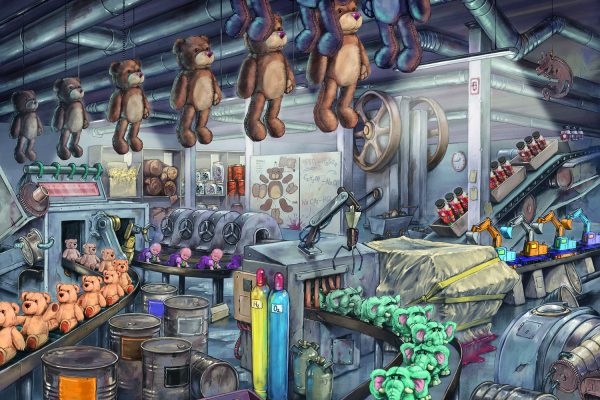Project Report For Toy Factory
Introduction
The Project Report For Toy factory is as Follows.
It is an industry that manufactures a wide variety of toys, games, and playthings for children and adults alike. Toy factories are often big manufacturing buildings where many stages of toy production occur. Design, prototyping, molding, assembly, painting, and packaging are examples of these stages.
Designers, engineers, mold makers, assemblers, and quality control personnel are among the skilled workers employed by the factories. Toy designers generate concepts and prototypes during the design and development phase. To assure safety and functionality, this step may entail drawing, 3D modeling, and testing.
Designers and engineers collaborate at a toy factory to create fresh toy concepts and turn them into viable products. They build toys with diverse features and functionality out of various materials such as plastic, metal, fabric, and electronics.
Once the designs are finalized, the factory employs machinery and expert personnel to mass-make the toys. Toy manufacturers produce a wide variety of toys, including plush animals, action figures, dolls, board games, puzzles, remote-controlled toys, building kits, and many others. These toys are subsequently packaged and distributed to stores, wholesalers, or directly to customers.

Manufacturing Process Of Toy Factory
Design and Development: The first step in toy manufacturing is the design and development phase. Toy designers and engineers work together to create concepts and prototypes of new toys. They consider factors such as safety, functionality, aesthetics, and market demand during this phase.
Material Procurement: Once the design is finalized, the toy factory procures the necessary raw materials. These materials can include plastics, metals, textiles, electronic components, paints, and adhesives. The sourcing process involves finding reliable suppliers who provide high-quality materials.
Preparing the Mold: For toys made from plastic, the factory creates molds based on the approved design. These molds are typically made from steel or aluminum and are carefully crafted to ensure precise replication of the toy’s shape and features.
Injection Molding: Injection molding is a widely used manufacturing process for producing plastic toys. Plastic pellets are melted and injected into the molds, where they cool and solidify, taking the shape of the toy. Afterward, the molds are opened, and the newly formed toy parts are released.
Assembly: When the toy parts are completed, they are assembled. Assembly workers use adhesives, screws, or other attaching methods to assemble various components such as body parts, limbs, and accessories. At this stage, some toys may require extra operations such as painting or the inclusion of electronic components.
Quality Control: Quality control is an essential aspect of the toy manufacturing process. Inspectors thoroughly check each toy for defects, ensuring they meet safety standards and functional requirements. Any faulty toys are removed, and necessary adjustments are made to prevent such issues in the future.
Packaging and Labeling: After passing quality control, the toys are packaged and labeled for shipment. Packaging materials are chosen to protect the toys during transportation and storage. Labels include product information, safety warnings, age recommendations, and branding.
Market Potential Of Toy Factory
The global toys market was worth USD 129.45 billion in 2020 and is expected to increase at a CAGR of 7.30% between 2021 and 2028, reaching USD 230.64 billion by 2028.
Toys play an important role in children’s growth and development. Toys play an important role in brain development because they assist children acquire logical and reasoning skills as well as spatial thinking. Playing with toys and board games also helps children learn while also developing social and communication skills. The rise of the toys market is being driven by an increase in demand among youngsters for strategy-based and instructional toys.
Toys are classified into product category, age groups, sales channel, and area. Product categories in the global market include action figures, building sets, dolls, games/puzzles, sports & outdoor toys, plush, and others. It is studied in three age groups: those under the age of five, those between the ages of five and ten, and those over the age of ten. The market is segmented by sales channel into hypermarkets/supermarket, specialty stores, department stores, online channels, and others.
